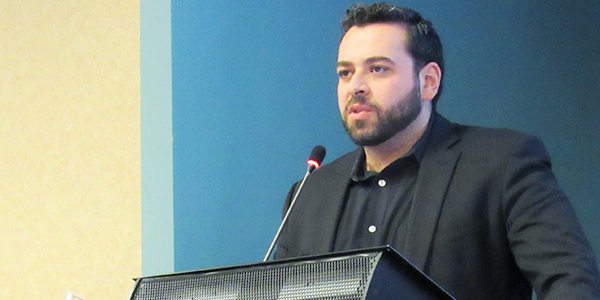By Amanda Durish Cook
MISO on Tuesday confirmed that it will work with stakeholders to develop a fast-track option in its interconnection queue to accelerate the process for projects that can demonstrate readiness for development.
The RTO’s effort will focus on creating an expedited definitive planning phase (DPP) to move projects into generation interconnection agreements (GIA) faster than in the existing three-phase process.
In what was an about-face for MISO, staff last month expressed receptiveness to a fast-track queue option for shovel-ready projects. (See FERC Again Denies MISO Wind Developers’ Queue Complaint.)
MISO’s queue now contains about 420 projects worth a combined 70 GW, after interconnection customers withdrew 43 projects in January, with renewable resources accounting for about 90% of the queue. The average project takes a little more than 500 days to work its way from application to interconnection approval.
Although MISO has signaled readiness for a proposal, it says several design details need to be worked out. Resource Interconnection Planning Manager Neil Shah said the move would be heavily shaped by stakeholder input.
“We’re all open ears on this,” Shah told stakeholders during a March 12 Interconnection Process Working Group meeting.
Shah said MISO, which deferred fast-track discussion in 2017 based on lukewarm response from interconnection customers, has since received “a handful” of new requests for an expedited DPP. Devising a fast-track option now would be a “proactive” move, he said, adding that MISO’s current provisional GIA process has limitations, with customers completing the process without a permanent GIA in place.
“We heard the process is not meeting needs for shovel-ready projects,” he said.
Shah foresees an expedited DPP that can be scaled in three to six months for select projects: “That’s what I envision. Obviously, they should be ready to provide all the evidence that they’re ready.”
He said project owners would have to “submit evidence of viability at the time of request” to use the expedited process.
However, MISO staff said they have not yet determined exactly how to measure project readiness.
But the RTO is considering multiple requirements for entering the expedited DPP, Shah said, including higher queue fees, more certain environmental permitting, cash as security and a method for covering the risk of queue restudies.
MISO also said projects opting for the expedited process will still be responsible for the full cost of necessary network upgrades.
‘Queue-jumping?’
Entergy’s Yarrow Etheredge asked MISO to look into the possibility of project owners using the expedited process to “game” the interconnection queue.
Shah agreed and asked if stakeholders would have “queue-jumping concerns” if the expedited option becomes available to all interconnection customers. He also asked whether they would prefer either a megawatt cap or a limit of the number of projects an interconnection customer can request.
“If it’s available to all customers, is it queue-jumping?” Shah asked stakeholders. He added that if MISO crafts stringent enough requirements, it may not have to worry about limits.
“If there’s two queues, one for shovel-ready projects, and one for speculative projects, it might not be queue-jumping,” Etheredge said.
“Excellent point,” Shah replied.
Shah also asked for written stakeholder input until April 2. MISO staff will review the feedback and return with more discussion at the May 14 meeting of the Interconnection Process Working Group.
Measures to Accelerate Existing DPP
MISO says it is also developing a plan to reduce its regular, three-phase queue design and GIA process. The current DPP alone is approximately 355 days, which the RTO is proposing to reduce to 265 days, with Phase 1 cut from 140 to 80 days, Phase 2 staying roughly the same at about 80 days and Phase 3 slimmed from 135 days to about 105 days. MISO will also attempt to reduce the timeline allotted to negotiate GIAs from 150 days to about 100 days.
“We looked back in the history of queue reform. We’ve gone through a number of process improvements. … After reassessing the queue … we thought maybe we can look at a different angle to gain efficiencies to reduce the timeline,” MISO Manager of Resource Interconnection Arash Ghodsian said.
To achieve the reductions, MISO said it will start generation modeling before Phase 1 of the DPP begins and complete voltage and thermal studies internally rather than outsourcing them. Ghodsian said MISO found it can complete the study quicker than it takes a third party to develop study models. The RTO also expects less complicated Phase 3 modeling and system impact studies after already moving to reduce the number of late project dropouts by increasing site control deposits and milestone fees. (See MISO to File Queue Changes Before Year-end.)
Ghodsian also noted that reduced time spent on GIA negotiations is an obvious spot to seek efficiencies, given that 57% of projects that sign interconnection agreements do so under the full timeline outlined in the Tariff.
But stakeholders said multiple project applications currently in the queue claim the same patch of land for building generation, which could complicate early modeling. MISO staff agreed that certain steps must be taken before the RTO holds scoping-level calls as part of the queue application process.
“Those things must be addressed before we start analysis. I agree we’re seeing some of this today,” Ghodsian said. He said MISO’s queue improvements proposed last year should help “quality control” the project applications.
“There’s going to be a lot of back-and-forth going on. We’re going to have checkpoints,” Ghodsian said of drafting the models. He also called MISO’s proposed timeline “a starting point” and asked for written stakeholder input through April 2.
“This is just a proposal; we would like to hear your thoughts on these changes,” Ghodsian said.





